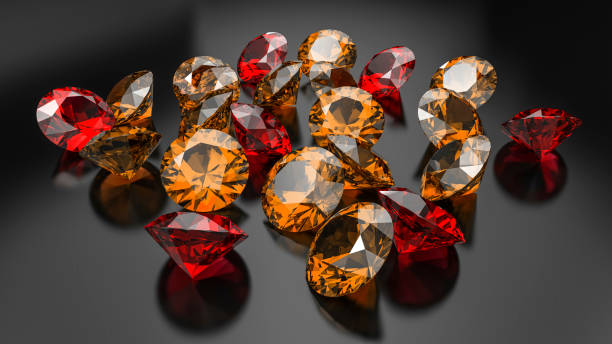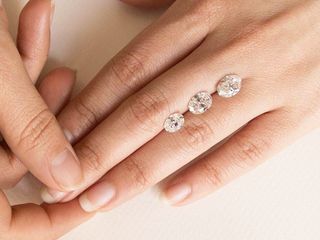
In recent years, lab-grown diamonds have become increasingly popular as a sustainable and ethical alternative to traditionally mined diamonds. Not only do they offer consumers a more eco-friendly option, but learn lab diamonds cut also come with exceptional clarity and beauty. However, one of the most important factors that contribute to the allure of a diamond is its cut. If you want to learn about lab diamonds and the intricacies of their cut, this article will walk you through everything you need to know about how lab-grown diamonds are cut and what factors influence their final appearance.
What Is a Lab Diamond Cut?
The term “cut” refers to the proportions, symmetry, and overall shape of a diamond. When you learn about lab diamonds cut, you will understand that it is a critical factor that influences the diamond’s brilliance and sparkle. A well-cut diamond reflects light in a way that maximizes its shine, while a poorly cut diamond may appear dull, even if it is of high quality in other areas.
Lab diamonds are cut using advanced technology in controlled environments, ensuring precise dimensions and angles. While the diamond’s natural beauty is inherent, the way it is cut can enhance or detract from its brilliance. Learning about lab diamonds cut involves understanding how a diamond’s proportions are meticulously adjusted to bring out the best possible visual appeal.
The Process of Cutting Lab Diamonds
The process of cutting a lab diamond is similar to that of a mined diamond, though there are some unique elements to lab-grown diamonds. Typically, once a lab diamond has been created, it begins its journey in the cutting process, where skilled gem cutters assess its shape, size, and overall structure.
Learning how lab diamonds cut begins with understanding the importance of the diamond’s rough shape. A rough diamond is evaluated for its internal and external characteristics, such as inclusions and natural flaws. These factors play a crucial role in determining how the diamond will be shaped and cut to maximize its visual appeal. After evaluating the diamond’s rough form, cutters use precision machinery to shape the diamond according to the desired cut.
The exact proportions and angles of a diamond’s cut are determined based on the desired final look. Each cut affects how light will interact with the diamond, influencing how it sparkles. A well-executed cut can make even a smaller diamond appear larger and more radiant. For lab diamonds, cutting technology is constantly advancing, leading to even more precision in shaping and polishing these diamonds to perfection.
Popular Cuts for Lab-Grown Diamonds
There are several popular cuts that you will encounter when you learn about lab diamonds cut. Each cut has its own unique characteristics and appeal. Some of the most commonly preferred cuts for lab diamonds include the round brilliant cut, princess cut, emerald cut, and cushion cut.
The round brilliant cut is by far the most popular choice, accounting for a significant percentage of diamond sales. This cut is known for its exceptional brilliance, as it has 58 facets that reflect light in various directions. Learning about lab diamonds cut will reveal how the round brilliant is designed to achieve maximum sparkle, making it a favorite among consumers.
Another common cut for lab diamonds is the princess cut, which is square in shape with pointed corners. This cut is popular for its contemporary look and the way it showcases the diamond’s brilliance. When learning about lab diamonds cut, you’ll find that the princess cut is a great choice for those who want a more modern and chic appearance.
The emerald cut is less flashy than the round brilliant cut but offers a sophisticated and timeless look. It features long, rectangular facets that create a unique optical effect. Learning how lab diamonds cut in the emerald style will help you understand how it maximizes clarity over sparkle, making it ideal for diamonds with fewer inclusions.
The cushion cut is another popular option, combining elements of both the round and emerald cuts. This cut has rounded edges and larger facets that bring out the diamond’s brilliance. As you learn about lab diamonds cut, you’ll appreciate how the cushion cut enhances the size and shine of the diamond, making it a beloved choice for engagement rings and other fine jewelry.
Factors That Affect the Cut of Lab Diamonds
When you learn about lab diamonds cut, it is important to understand the factors that impact how well the diamond will shine. These include the proportions, symmetry, and polish of the diamond. Each of these factors contributes to the diamond’s overall appearance and its ability to reflect light effectively.
The proportions of a lab diamond are the most important aspect of its cut. Proportions refer to the relationship between the diamond’s height, width, and depth. A diamond with perfect proportions will allow light to enter and exit in the most efficient way, maximizing its brilliance. If the proportions are off, the diamond may appear darker or duller than it should be.
Symmetry also plays a vital role in the final appearance of the diamond. When learning about lab lab made diamonds, you will discover that symmetry refers to how well the facets align with each other. If the facets are not perfectly aligned, the diamond’s brilliance will be diminished. Skilled cutters work to ensure that every facet is symmetrical to enhance the diamond’s visual appeal.
Finally, polish refers to the smoothness of the diamond’s surface. A diamond that is properly polished will have a reflective surface that enhances its brilliance. On the other hand, a poorly polished diamond may appear cloudy or dull. When you learn about lab diamonds cut, you will see how polish is an essential part of the final result, contributing to the diamond’s overall shine.
Why Lab Diamond Cut Matters for Consumers
Understanding the significance of a lab diamond’s cut is crucial for consumers who want to make informed decisions. The cut of a diamond can drastically impact its overall appearance, and in many cases, a well-cut lab diamond will appear more radiant and beautiful than a larger, poorly cut diamond.
As a consumer, you may be drawn to a specific lab diamond cut because of its shape or the way it complements your style. However, it’s important to consider not only the shape but also the quality of the cut. When shopping for lab diamonds, be sure to inquire about the diamond’s cut quality, as it will directly affect its sparkle, clarity, and overall appeal.
Conclusion: Mastering the Art of Lab Diamond Cuts
Learning about lab diamonds cut is essential for those interested in purchasing a beautiful, high-quality gemstone. A diamond’s cut plays a significant role in its brilliance, and the precision with which a lab diamond is cut can significantly enhance its visual appeal. By understanding the factors that influence a diamond’s cut—such as proportions, symmetry, and polish—you can make an informed decision when selecting a lab-grown diamond. Whether you prefer the traditional round brilliant cut or a more unique shape, the perfect cut can elevate the beauty and value of your lab-grown diamond.



